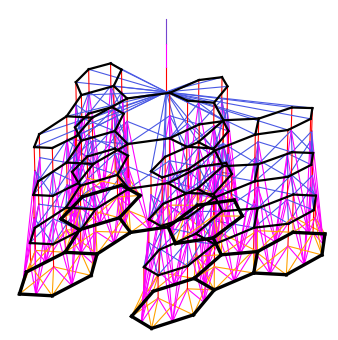Markdown
[](https://paperswithcode.com/sota/drug-discovery-on-hiv-dataset?p=convolutional-networks-on-graphs-for-learning)
[](https://paperswithcode.com/sota/drug-discovery-on-pcba?p=convolutional-networks-on-graphs-for-learning)
[](https://paperswithcode.com/sota/graph-regression-on-lipophilicity?p=convolutional-networks-on-graphs-for-learning)
[](https://paperswithcode.com/sota/drug-discovery-on-muv?p=convolutional-networks-on-graphs-for-learning)
[](https://paperswithcode.com/sota/drug-discovery-on-toxcast?p=convolutional-networks-on-graphs-for-learning)
[](https://paperswithcode.com/sota/drug-discovery-on-tox21?p=convolutional-networks-on-graphs-for-learning)
[](https://paperswithcode.com/sota/node-classification-on-pubmed-003?p=convolutional-networks-on-graphs-for-learning)
[](https://paperswithcode.com/sota/node-classification-on-cora-05?p=convolutional-networks-on-graphs-for-learning)
[](https://paperswithcode.com/sota/node-classification-on-pubmed-005?p=convolutional-networks-on-graphs-for-learning)
[](https://paperswithcode.com/sota/node-classification-on-pubmed-01?p=convolutional-networks-on-graphs-for-learning)
[](https://paperswithcode.com/sota/node-classification-on-citeseer-05?p=convolutional-networks-on-graphs-for-learning)
[](https://paperswithcode.com/sota/node-classification-on-citeseer-1?p=convolutional-networks-on-graphs-for-learning)
[](https://paperswithcode.com/sota/node-classification-on-cora-1?p=convolutional-networks-on-graphs-for-learning)
[](https://paperswithcode.com/sota/node-classification-on-cora-3?p=convolutional-networks-on-graphs-for-learning)
[](https://paperswithcode.com/sota/node-classification-on-pubmed-with-public?p=convolutional-networks-on-graphs-for-learning)
[](https://paperswithcode.com/sota/node-classification-on-cora-with-public-split?p=convolutional-networks-on-graphs-for-learning)
[](https://paperswithcode.com/sota/node-classification-on-citeseer-with-public?p=convolutional-networks-on-graphs-for-learning)






















 Cora
Cora
 Tox21
Tox21
